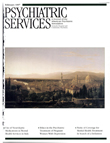Utilization of neuroleptic drugs in Italian mental health services: a survey in Piedmont
Abstract
OBJECTIVE: This survey describes neuroleptic prescribing practices in Italian mental health services 15 years after implementation of a mental health reform law that shifted the focus of care from mental hospitals to community services. METHODS: The authors conducted a cross- sectional survey of neuroleptic prescribing practices in several psychiatric services throughout the Piedmont region in northern Italy. The relationship between dosing patterns and patients' characteristics was assessed using multiple regression analysis. RESULTS: Sixty-six community mental health services and 14 psychiatric wards in general hospitals participated in the survey in 1991. Among the 3,823 psychiatric patients seen in these settings for whom survey data were available, 67 percent of outpatients and 84 percent of inpatients were prescribed neuroleptic drugs. Twenty-eight percent of outpatients and 45 percent of inpatients received more than one neuroleptic. The average daily dose of neuroleptics was low to moderate; 89 percent of outpatients and 67 percent of inpatients received 500 mg of chlorpromazine equivalents or less. The neuroleptic dose was significantly associated with patients' age, education, diagnosis, length of treatment, and receipt of polypharmacy. CONCLUSIONS: This survey confirms the low to moderate neuroleptic dosing in Italian mental health services, both in outpatient and inpatient settings. However, it also documents the widespread use of polypharmacy, a pattern that has remained largely unchanged over the past 15 years.



